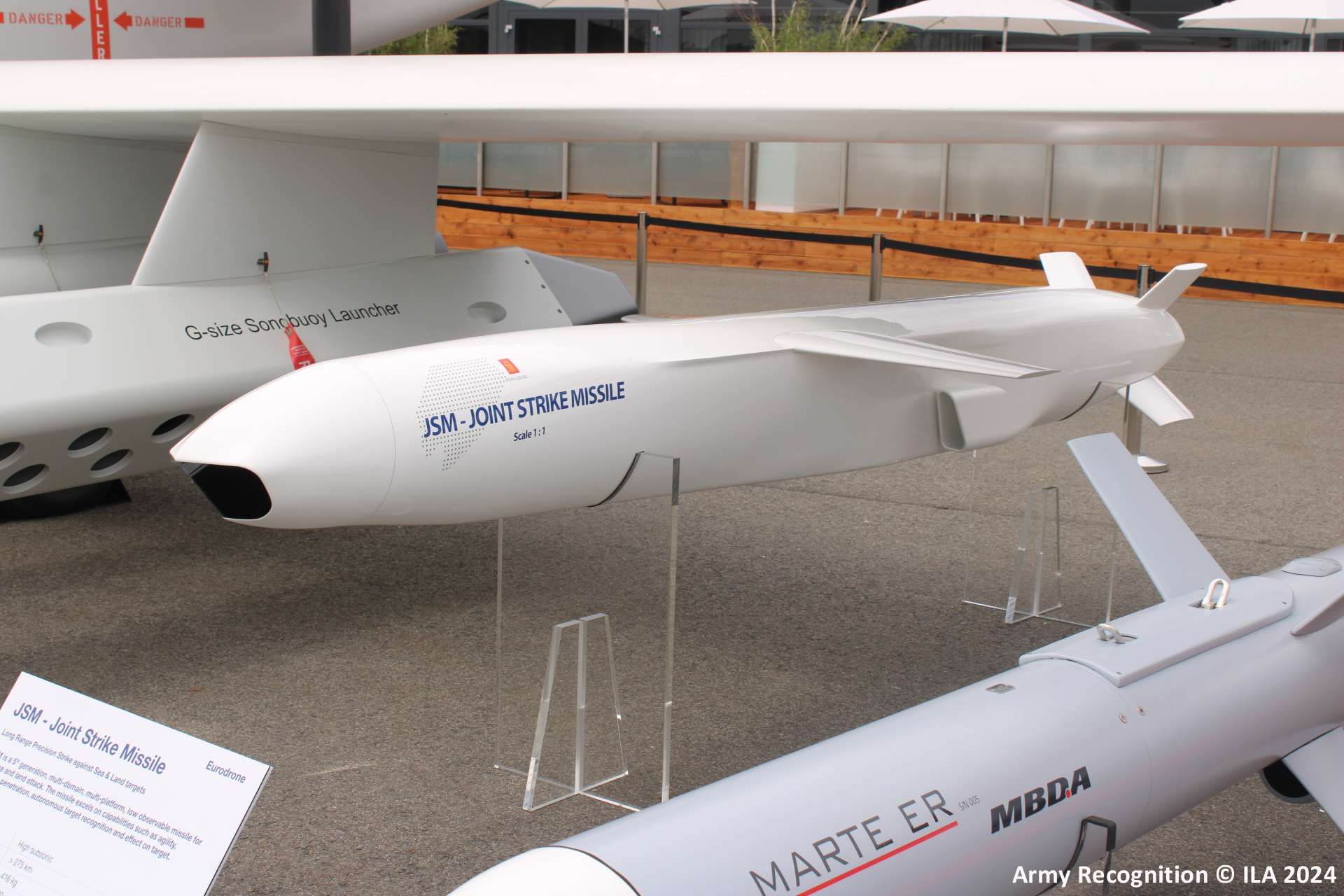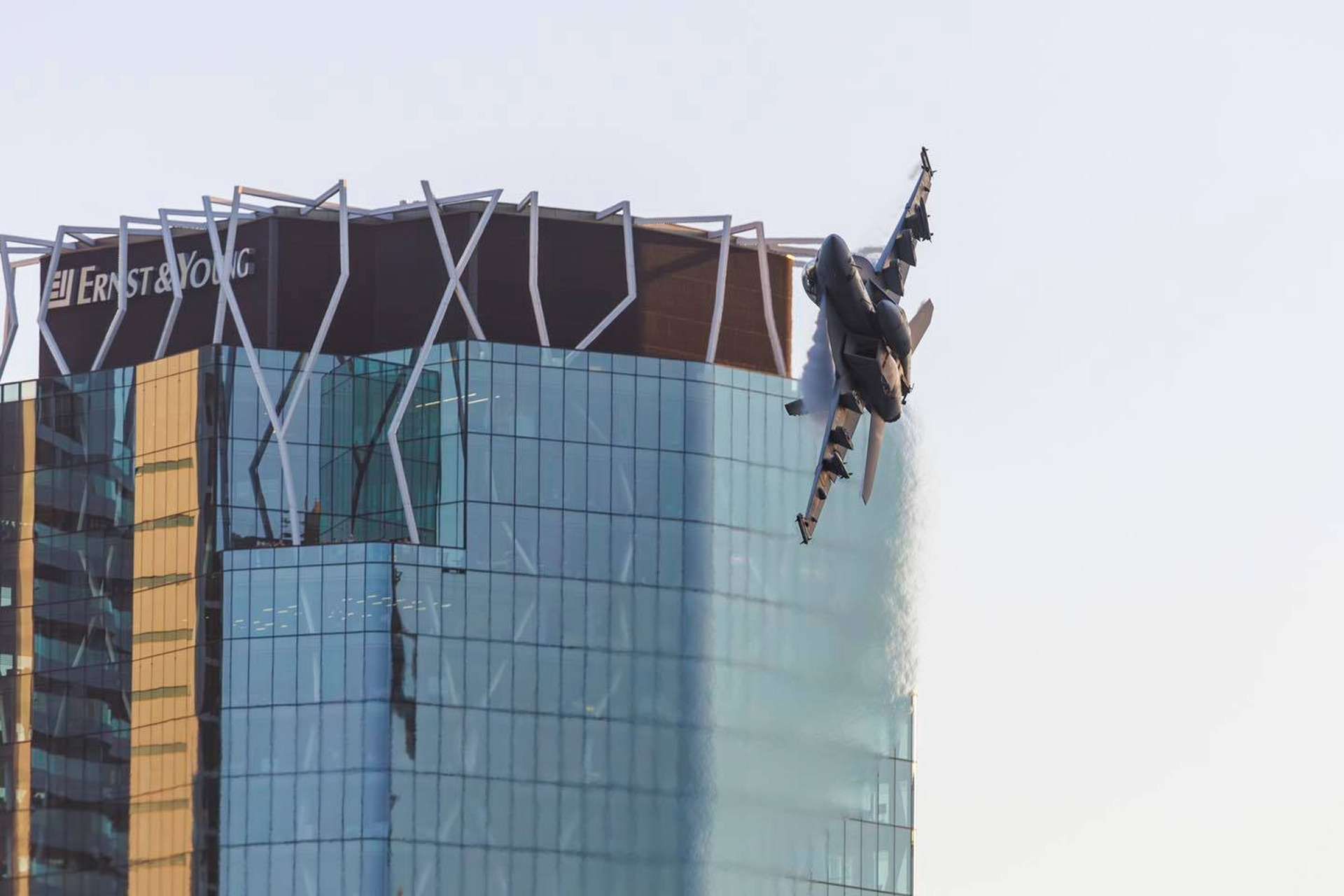Breaking News
Australia orders $94 Million worth of Joint Strike Missiles to arm F-35A stealth fighters.
On September 5, 2024, the Norwegian company Kongsberg Defence & Aerospace signed a contract with the Australian government to supply Joint Strike Missiles (JSM) for the Royal Australian Air Force's F-35A aircraft. The contract, valued at approximately NOK 1 billion (around $94.155 million), involves the integration of a new missile system into Australia's defense capabilities, enhancing the F-35A's ability to engage both land and sea targets at extended ranges.
Follow Army Recognition on Google News at this link

As of 2024, Australia has taken delivery of 60 of the planned 72 F-35As, with potential expansions of the fleet under consideration to ensure continued competitiveness in the Asia-Pacific region. (Picture source: Eielson Air Force Base)
According to Eirik Lie, President of Kongsberg Defence & Aerospace, Australia now joins Norway, Japan, and the United States in adopting the Joint Strike Missiles (JSM) for their respective defense forces. Lie noted that Australia's involvement is expected to add resources and expertise to the missile program, potentially benefiting all participating countries. He also stated that the contract represents a continuation of Kongsberg's collaboration with Australian authorities, including plans to support missile production in Australia.
This partnership aligns with the Australian government's recent announcement to establish a new facility for manufacturing Kongsberg strike missiles in Newcastle, Australia. On August 22, 2024, it was disclosed that up to $850 million would be invested in collaboration with Kongsberg Defence Australia to build a missile manufacturing and servicing plant at Williamtown, near Newcastle, within the Newcastle Airport precinct. The construction phase of this facility is expected to create over 500 jobs and contribute approximately $100 million to the local economy. Once operational, the facility is projected to employ about 100 people, focusing on the production and servicing of both Naval Strike Missiles (NSM) and Joint Strike Missiles (JSM) for the Australian Defence Force (ADF).
The Williamtown facility will be one of only two missile production sites of its kind globally, with the other located in Kongsberg, Norway. Construction is planned to begin later this year, aligning with the Australian government's broader strategy to strengthen domestic defense manufacturing capabilities. This investment forms part of the Guided Weapons and Explosive Ordnance (GWEO) Enterprise, a component of the Australian Government's 2024 Integrated Investment Program. This program provides for up to $21 billion over the next decade, in line with the 2024 National Defence Strategy, which focuses on enhancing the ADF's precision strike capabilities and supporting local munitions production.

The Joint Strike Missile (JSM) is an evolution of the NSM, tailored for air-launch operations and optimized for internal carriage within the F-35's weapons bay. (Picture source: Army Recognition)
The Joint Strike Missile (JSM), slated for production at the Williamtown facility, is an air-launched cruise missile developed by Kongsberg Defence & Aerospace for use with the F-35 Lightning II fighter jet. It is designed for anti-surface warfare and land attack missions. The missile is approximately 4 meters in length, weighs around 416 kilograms, and has a range exceeding 275 kilometers. It features advanced mission planning capabilities, both on-board and off-board, allowing it to engage targets according to pre-set rules of engagement. Several NATO countries, including Norway and the United States, have already incorporated the JSM into their arsenals following successful flight tests from F-35 aircraft.
Australia's engagement with the F-35 Lightning II program began in 2002, when the government decided to join the Joint Strike Fighter (JSF) program as a Level 3 participant. The decision was made to replace the country's aging fleets of F/A-18 Hornets and F-111 aircraft and to influence the development of the F-35, gain early access to performance data, and potentially achieve cost savings if the F-35s were ultimately purchased. Despite military advice suggesting it was premature to commit to the program, Australia signed the JSF Production, Sustainment, and Follow-on Development Memorandum of Understanding in December 2006, agreeing to continue to the next development phase.
To mitigate risks associated with possible delays in the F-35 program, Australia ordered 24 F/A-18F Super Hornets in 2007, with deliveries starting in 2009. In 2007, the newly elected Australian government reviewed air combat capability replacement options and considered alternatives, including the F-22 Raptor. However, this option was dismissed as the aircraft was not available for export. The review ultimately concluded that the F-35 was the most suitable choice for Australia.

Due to delays in the F-35 program, Australia opted to continue operating its F/A-18F Super Hornet fleet, initially acquired as an interim measure, for at least 20 years. (Picture source: Royal Australian Air Force)
By 2009, financial constraints and the global financial crisis led the government to consider reducing its planned order from 100 to 75 F-35s, although the 2009 Defence White Paper maintained support for a possible purchase of up to 100 aircraft. In April 2014, Australia confirmed the acquisition of an additional 58 F-35As, bringing the total planned order to 72 aircraft to replace the Royal Australian Air Force's 71 F/A-18A/B Hornets. These orders are part of the Air 6000 Phase 2A/2B new air combat capability project, with deliveries set to commence in 2018 and initial operational capability expected by 2020.
Due to delays in the F-35 program, Australia opted to continue operating its F/A-18F Super Hornet fleet, initially acquired as an interim measure, for at least 20 years. The possibility of procuring F-35Bs for use on the Royal Australian Navy’s Canberra-class amphibious ships was considered but ultimately rejected because of the high costs involved in modifying the ships. As of 2024, Australia has taken delivery of 60 of the planned 72 F-35As, with potential expansions of the fleet under consideration to ensure continued competitiveness in the Asia-Pacific region.
The F-35A, the Conventional Take-Off and Landing (CTOL) variant of the F-35 Lightning II, is intended to replace older aircraft such as the F-16 Fighting Falcon and A-10 Thunderbolt II in roles that include close air support, air defense, and tactical bombing. It is equipped with an internal GAU-22/A cannon and is capable of carrying various weapons, including AIM-9X and AIM-120 missiles, GBU-12 laser-guided bombs, and GBU-31 GPS-guided bombs. The F-35A has a combat radius of 1,135 kilometers and can reach a maximum speed of Mach 1.6. The aircraft is expected to remain in service until at least 2070, providing a range of capabilities in areas such as stealth, payload, range, avionics, and supportability.


























